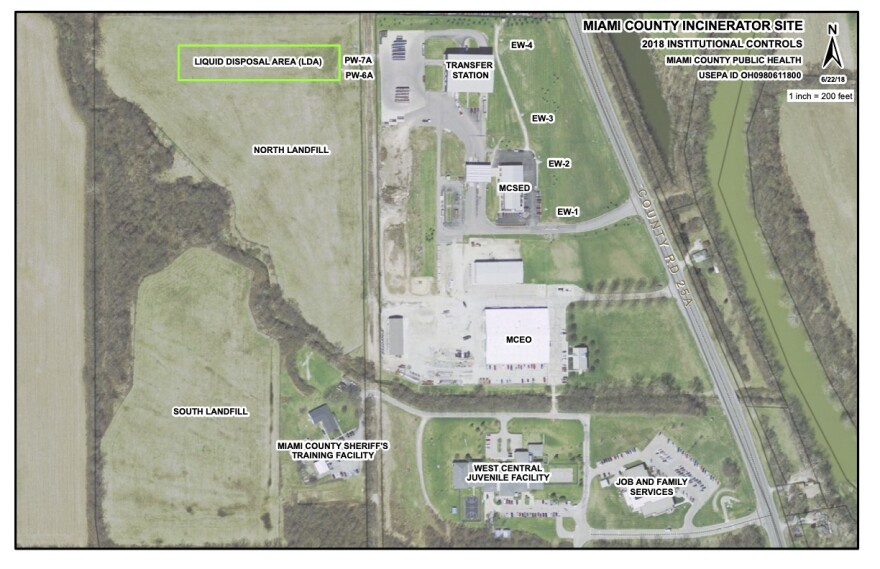The Miami County waste incinerator site in Troy was decommissioned in the '70s because of contamination. But the land has the potential to serve a new purpose: generating solar power.
That’s according to a report by solar energy provider Kokosing Solar released earlier this year. It determined a solar project here could power several county buildings, leading to energy savings.
The site is on the U.S. EPA’s National Priorities List, designating it as one of the country’s most contaminated sites.
A plan is in place to clean up the pollution, but Miami County commissioners wanted to see whether the site can be transformed and used again.
Josh Lococo, Miami County assistant sanitary engineer, ordered the report in 2023. He said the buildings that could be powered by such a facility include sanitary engineering buildings, a jobs and family services property, the county engineer’s office, a transit garage and the youth detention center.
“If we went with the smaller-scale one, energy costs would decrease for the county. You know, there's several complexes here that would be powered solely by that solar field,” Lococo said.
A utility-scale project in this area turned out to be cost-prohibitive, Lococo said. There are currently no utility-scale solar facilities based in Miami County.
Of the 31 acres analyzed, three acres on the north side of the landfill could be used for the solar array powering county-owned facilities, according to the report.

Another benefit of doing the project: It could decrease landscaping costs.
“We're taking land that's currently fenced off – you know, it's not being utilized for anything,” Lococo said. “…We have to cut the grass, we have to make sure ground hogs aren't digging in the dirt, [make] sure all of the vent caps are good and then [make] sure the fences are good.”
Some of the contaminants include vinyl chloride, arsenic and lead. Lococo said a solar project is the most feasible reuse of the site. But that doesn’t mean it would happen quickly.
“Even if we decided tomorrow that we wanted to move forward with this, it would take a number of years to get through, not only all the engineering of it, but also all the regulatory hurdles,” he said.
The U.S. EPA, Ohio EPA, and Miami County commissioners would all have to sign off on the plan. Lococo said a work session to go over the report with the commissioners has yet to be scheduled.
Kokosing also finds the remaining 28 acres could be used for “community solar,” which allows surrounding residents to lease portions of a solar project. They can then receive credits for their portion of the solar power generated. But Lococo said the county may want to “start small” then look to expand later.
The groundwater at the site is currently extracted and sent to Troy’s wastewater treatment plant for treatment. Lococo said the project would be done in conjunction with the current remediation plan.



